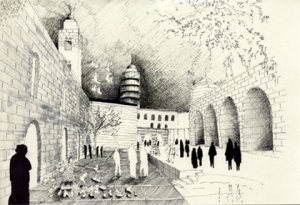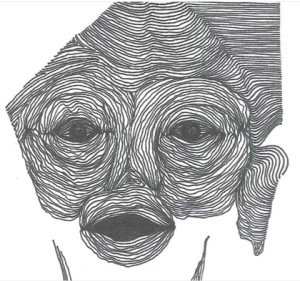Drawings probe the human cost of war
A Syrian refugee artist living in the UK has produced a haunting and visceral series of images that capture the human sorrow and trauma of a decade of war has wrought in his homeland.
Dr Ammar Azzouz is a UK-based architect, writer and artists who has always found solace and refuge in art. He has produced the images, collectively called ‘Faces of Syria’ for New Humanitarian magazine.
 The 33-year-old took art classes in his home city of Homs, in western Syria; and the place became the capital of the Syrian revolution against the al-Assad government.
The 33-year-old took art classes in his home city of Homs, in western Syria; and the place became the capital of the Syrian revolution against the al-Assad government.
“In art, I found a refuge, a place to feels secure and safe. I felt that drawings and paintings could tell a story, and had their own language,” Ammar said.
He left Syria in 2011 to continue his education in the UK. Soon after, violent crackdowns on protesters began with tanks on the streets.
Ammar has never been back to Syria and has seen his parent just once in the intervening decade. He turned to art to cope with his experiences of trauma, exile and the death of friends.
After a decade of war, more than 13 million Syrians have been forced to flee their homes. About 6.7 million are displaced within Syria and another 6.6 million are seeking refuge or asylum in other countries – mostly the ones bordering Syria.
It is uncertain whether these people will ever be able to go home of start new lives in third countries.
Studies show that displaced Syrians are highly vulnerable the mental health issues including PTSD and depression but treatment for these conditions can be difficult for them to access.
Ammar says his artwork was a therapy of sorts.
“I was struggling to put trauma into words, and drawing be3came a way of communicating what was happening within,” Ammar said.
 “In Homs, the third largest city in Syria, entire neighbourhoods have been turned into rubble, destroying the familiar and reshaping the urban, social and cultural fabric of the city.
“In Homs, the third largest city in Syria, entire neighbourhoods have been turned into rubble, destroying the familiar and reshaping the urban, social and cultural fabric of the city.
“However, despite this mass destruction and displacement, local architects, urbanists and residents are showing incredible levels of resilience; rehabilitating their partially damaged homes and providing shelter to the
“Homs, and the surviving parts of the city, have become imagined and material places of refuge for many Homsis in the work of remembering, reflecting and seeking to reconstruct a vanished past—but also might be used to rethink the city, and to imagine its future,” Ammar said.
He studied architecture in Syria and completed a PhD in architecture at the University of Bath.
 Ammar is now a member of the CITY Collective, one of the top academic journals on urban studies in the world.
Ammar is now a member of the CITY Collective, one of the top academic journals on urban studies in the world.
His architectural research interests include divided cities, local and international responses to destruction and displacement, and the politics of reconstruction.
Ammar’s work has been published internationally and he has been invited to present research universities including MIT, Cambridge, Bath, Manchester, and Essex.
His art has been exhibited at London’s Imperial War Museum and the Victoria & Albert Museum.
See the New Humanitarian’s gallery of Ammar’s work:https://interactive.thenewhumanitarian.org/stories/2021/12/8/drawing-syrias-trauma/?utm_source=The+New+Humanitarian&utm_campaign=ac2f422a2a-EMAIL_CAMPAIGN_12_8_2021_DAILY&utm_medium=email&utm_term=0_d842d98289-ac2f422a2a-75436125












